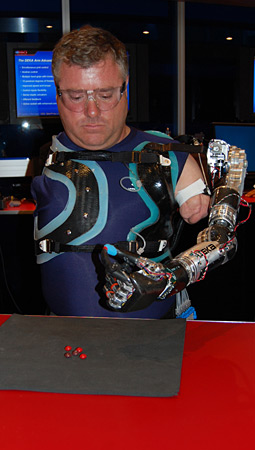Its rock-hard surface can take a full- on assault from a baseball bat, yet remains flexible enough to allow you to kick, leap and roll with perfect ease. Crafted from cutting-edge science, its unique molecular structure means that while providing armoured protection against crude concrete and even barbed wire, it remains light enough to allow you to run at high speed. It sounds like the stuff of Batman comics - but the superhero suit is here.Identified as a major breakthrough that could impact on every sector from the military to motor sports, the revolutionary shock-absorbent material
d3o is taking the world by storm. Blessed with the kind of properties your average costumed crime fighter would kill for, it is being hailed as an invention with the potential to change entire industries and save real lives.
In a nutshell, d3o is an advanced polymer with an intelligent molecular structure that flows with you as you move but, when shocked, locks together to become rigid enough to absorb impact energy. In its simplest form, it is like an automatic knee-pad that can be sown seamlessly into a pair of jeans."
At the moment a complete superhero suit made of our material would be a bit too heavy and far too expensive, but those challenges should be overcome within the next few years."
Today the material is fast becoming a common component of cutting-edge protective equipment, with the d3o brand beginning to feature in a range of winter and motor sports products worldwide. It has been adopted enthusiastically by the likes of US Olympic ski team, the four-times Everest climber Kenton Cool and Olympic cyclist Craig McClean.
Source:
Spluch
 Inspired by the efficient swimming motion of the bluegill sunfish, MIT researchers are building a mechanical fin that could one day propel robotic submarines.
Inspired by the efficient swimming motion of the bluegill sunfish, MIT researchers are building a mechanical fin that could one day propel robotic submarines.













